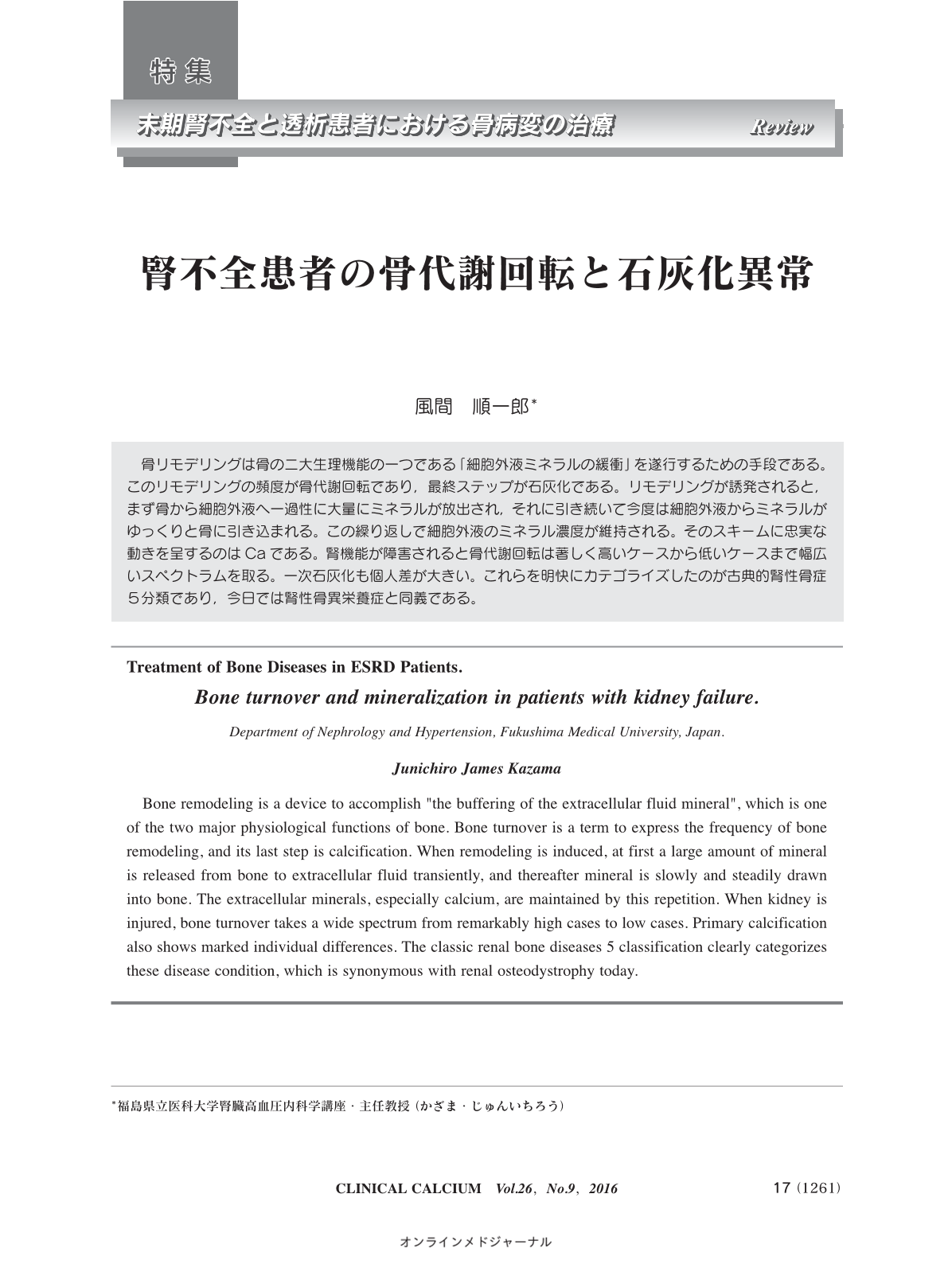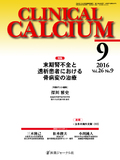Japanese
English
- 有料閲覧
- Abstract 文献概要
- 1ページ目 Look Inside
- 参考文献 Reference
骨リモデリングは骨の二大生理機能の一つである「細胞外液ミネラルの緩衝」を遂行するための手段である。このリモデリングの頻度が骨代謝回転であり,最終ステップが石灰化である。リモデリングが誘発されると,まず骨から細胞外液へ一過性に大量にミネラルが放出され,それに引き続いて今度は細胞外液からミネラルがゆっくりと骨に引き込まれる。この繰り返しで細胞外液のミネラル濃度が維持される。そのスキームに忠実な動きを呈するのはCaである。腎機能が障害されると骨代謝回転は著しく高いケースから低いケースまで幅広いスペクトラムを取る。一次石灰化も個人差が大きい。これらを明快にカテゴライズしたのが古典的腎性骨症5分類であり,今日では腎性骨異栄養症と同義である。
Bone remodeling is a device to accomplish "the buffering of the extracellular fluid mineral", which is one of the two major physiological functions of bone. Bone turnover is a term to express the frequency of bone remodeling, and its last step is calcification. When remodeling is induced, at first a large amount of mineral is released from bone to extracellular fluid transiently, and thereafter mineral is slowly and steadily drawn into bone. The extracellular minerals, especially calcium, are maintained by this repetition. When kidney is injured, bone turnover takes a wide spectrum from remarkably high cases to low cases. Primary calcification also shows marked individual differences. The classic renal bone diseases 5 classification clearly categorizes these disease condition, which is synonymous with renal osteodystrophy today.



